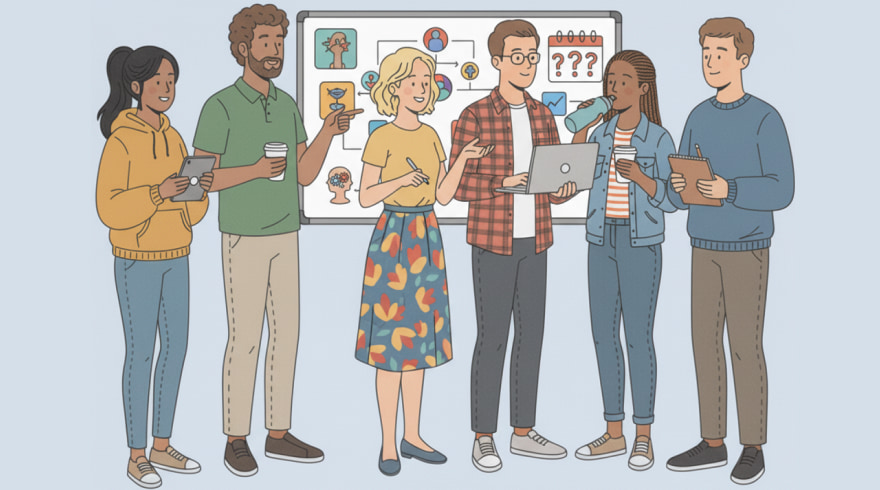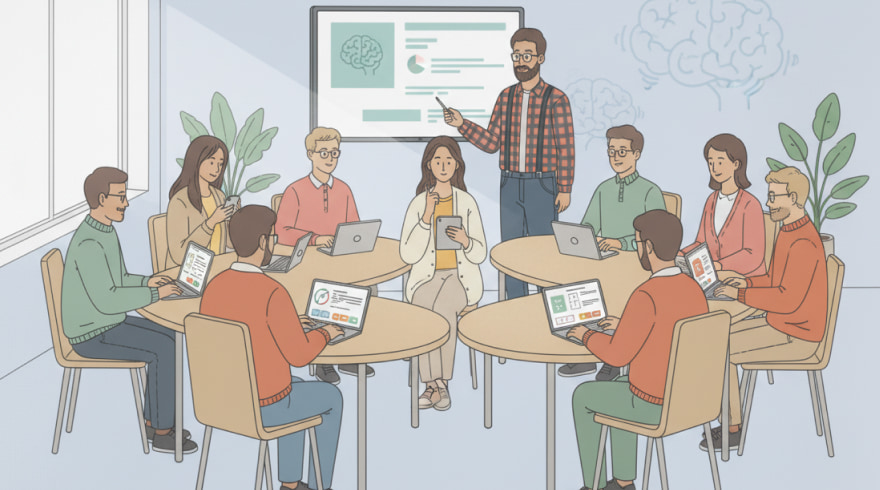Comprehensive Guide to Teen Autism Screening at No Cost
- 31 October 2025

Understanding Teen Autism Screening and Why It Matters
Adolescence is a stage defined by rapid growth, shifting social expectations, and increasingly complex communication demands. During this time, some teens and their families may notice persistent patterns related to social reciprocity, sensory differences, or rigid routines that raise questions about neurodevelopment. A screening tool can offer a structured lens on those observations, translating day‑to‑day experiences into measurable indicators that can guide next steps. Unlike a clinical diagnosis, a screening does not label or categorize; it simply highlights the probability that further evaluation could be beneficial.
Because online questionnaires are accessible and immediate, they can demystify what clinicians look for, reduce uncertainty, and spark constructive conversations at home or school. When teens and caregivers review items together, they build a shared language for discussing strengths and struggles, which often reduces friction and increases mutual understanding. A thoughtful screening experience should feel respectful, nonjudgmental, and age‑appropriate, recognizing that many adolescents mask or camouflage traits in social settings. The right tool frames results as information rather than verdict, empowering families to pursue guidance, request classroom supports, or monitor changes over time without pressure.
Equally important, a credible screener promotes health literacy. It clarifies common autistic characteristics, points out co‑occurring concerns that might require attention, and encourages evidence‑based decision‑making. Teens benefit from clarity about what they are experiencing, and caregivers benefit from actionable direction rather than vague worry. Whether the outcome suggests continued observation or a referral, a well‑designed screening can transform uncertainty into a plan, laying the groundwork for compassionate support and informed advocacy in school, community programs, and healthcare settings.
What Does an Online Screening Typically Measure?
Quality adolescent screeners look at multiple domains to capture a nuanced picture of social communication and behavior. They often probe how a teen starts conversations, interprets tone or facial expressions, and maintains back‑and‑forth dialogue. Items examine repetitive patterns such as strong, focused interests, routines that feel essential, or motor mannerisms like fidgeting and pacing. Many tools also touch on sensory processing, asking whether certain textures, lights, sounds, or smells feel overwhelming or unusually pleasant, and whether those sensitivities shape daily choices.
Beyond these core domains, responsible questionnaires explore flexibility and planning, including transitions between tasks, tolerance for unexpected change, and time management under stress. Many families look for a free autism test for teens as a low‑pressure starting point, and a well‑constructed screener further clarifies the context by asking about school, friendships, and extracurricular settings. The best tools disclose how they were validated, what age ranges they cover, and how to interpret scores without overpromising definitive conclusions.
Because every teen presents differently, good screeners use clear language, concrete examples, and balanced response options to reduce guesswork. They also specify approximately how long completion should take, what to do if a question does not seem to fit, and whether caregiver input is recommended alongside self‑report. Many recognized instruments were tested across diverse groups to improve generalizability and reduce cultural bias, though no tool is perfect. In practice, a sound screening shines when it highlights patterns across situational contexts and time, guiding families toward appropriate resources rather than leaving them with ambiguous numbers.
Benefits and Limitations to Keep in Mind
Accessibility is the most visible benefit of online screening for adolescents. Immediate availability reduces wait times and helps families capture observations while they are fresh. An anonymous format can also lower anxiety, encouraging honest reflection about sensitive topics like friendships, classroom participation, or sensory overload. Teens who prefer self‑paced activities often appreciate the ability to pause and resume, reread items, or consult with a caregiver without time pressure. Insights gleaned from a structured questionnaire can inform discussions with teachers about accommodations, such as predictable routines, reduced sensory load, or alternative communication formats.
Yet limitations matter. Screening outcomes are probabilistic, not diagnostic, and scores can shift with mood, context, or interpretation of questions. Misunderstood items may inflate or deflate results, and co‑occurring concerns, such as ADHD, anxiety, language differences, or trauma, can complicate the picture. Families should treat elevated scores as a prompt to seek professional evaluation rather than a final answer. A board‑certified clinician can integrate history, direct observation, and standardized assessments to differentiate overlapping presentations and identify supports with precision.
Balanced expectations help everyone. Think of a screening as a map, not a destination: it points to promising routes but cannot guarantee the landscape ahead. The most useful next steps often include documenting examples from school and home, gathering teacher feedback, and reviewing developmental history. With that preparation, a clinical appointment becomes more efficient, and the resulting plan, whether it includes therapy, educational supports, or skills coaching, can be targeted to real‑world needs.
How to Prepare and Take a Teen Autism Screening Online
Preparation boosts the clarity of any questionnaire. Choose a quiet, well‑lit space where the teen feels safe to think and reflect, and set aside uninterrupted time. If the teen uses assistive technology or prefers certain accessibility settings, enable them before starting. Encourage careful reading of each item, and when examples are provided, talk through how they map onto recent experiences at school, in extracurriculars, and in family life. Honest answers matter more than “right” answers, so normalize uncertainty and allow brief breaks if attention wanes.
Many families collect perspective from multiple settings to reduce bias and recall errors. A parent or caregiver can complete a parallel form if offered, and teachers or coaches might contribute observations about group work, transitions, and social nuance. After submission, save or print the summary so you can compare future scores or share them with clinicians. If a question feels confusing, note why; that detail can later help a professional interpret results or suggest a more appropriate tool. Avoid rushing, and resist the temptation to answer aspirationally; the goal is an accurate snapshot of typical patterns, not an idealized picture.
- Before you begin, gather relevant school reports and any prior screenings.
- Plan to answer based on behavior over months, not isolated days.
- Involve the teen in decisions about privacy and sharing results.
- Use accessibility features such as larger text, screen readers, or color filters if helpful.
- Record follow‑up questions to ask a clinician or school counselor later.
Interpreting Results, Next Steps, and Practical Resources
When a summary score appears, start by reading the tool’s guidance notes. Most respected screeners provide cutoffs indicating whether further evaluation should be considered, while also cautioning that elevated scores do not equal a diagnosis. Context is your ally: note where traits show up consistently, where they fluctuate, and what supports already help. Consider the teen’s own perspective, because lived experience offers essential nuance that numbers alone miss. Families can then outline a plan that blends short‑term strategies with longer‑term evaluation, keeping communication open and collaborative.
| Screening Outcome Pattern | What It May Indicate | Suggested Next Steps | Helpful Resources |
|---|---|---|---|
| Scores below threshold across domains | Lower likelihood of autistic presentation based on this tool alone | Monitor over time; revisit if new concerns emerge | School counselor, youth social‑skills workshops |
| Scores near cutoff in one or two areas | Situational challenges or partial trait profile warranting attention | Request teacher input; try classroom accommodations; consider referral | 504/IEP information, sensory supports, coaching |
| Scores above cutoff in multiple domains | Elevated likelihood that a comprehensive evaluation will be informative | Schedule a diagnostic assessment; gather developmental history | Pediatrician, neuropsychologist, speech‑language pathologist |
| Inconsistent responses or uncertainty | Measurement issues or overlapping conditions affecting clarity | Retake with caregiver input; screen for ADHD, anxiety, learning differences | Community mental‑health clinics, school psychology services |
Follow‑through is where insights become support. Some directories curate tools tagged as autism test for teens free, making discovery simpler, but the gold standard remains a comprehensive clinical evaluation when concerns persist. While waiting for appointments, practical adjustments, predictable routines, sensory‑friendly study zones, and clear communication, can ease stress and improve daily functioning. Document what helps and what does not, since those notes are invaluable during intake interviews and can accelerate an individualized plan that matches the teen’s goals and values.
Privacy, Ethics, and Talking with Caregivers or Clinicians
Privacy deserves careful attention, especially for minors. Before starting any online screening, review how the site stores data, whether responses are anonymized, and if results can be downloaded without creating an account. Teens should have a say in who sees their summaries, and caregivers should model respectful boundaries while ensuring safety and appropriate follow‑up. When in doubt, treat results as sensitive health information and store them securely. Schools and healthcare providers operate under specific privacy frameworks, so ask how your information will be handled at each step.
Ethically, framing matters. Present the screening as a tool to understand strengths and needs rather than a label to define identity. Encourage the teen to share how items resonated or missed the mark, and listen for contexts, such as crowded hallways, group projects, or unstructured time, where supports could reduce friction. If the teen belongs to a marginalized community, seek clinicians experienced with culturally responsive assessment, as bias can shape both items and interpretations. Transparency about limitations helps maintain trust and prevents overreliance on a single score.
Communication with professionals works best when you arrive prepared. Bring examples, teacher notes, and any prior testing. Clarify goals, reduced overwhelm, smoother transitions, stronger peer connections, so recommendations align with real‑life priorities. Whether the path includes therapy, school accommodations, or family coaching, collaboration keeps momentum strong and ensures the teen’s voice guides decisions. Over time, iterate on what works and celebrate gains, however small, to sustain motivation.
FAQ: Quick Answers About Teen Autism Screenings
Is an online screener the same as a diagnosis?
No. A screener estimates the likelihood that further evaluation could help, while a diagnosis requires a comprehensive assessment by qualified clinicians using multiple sources of information.
How long do most teen screeners take to complete?
Many take 10–20 minutes, though some are shorter or longer. Time varies with reading speed, reflection, and whether a caregiver contributes a companion form.
What should we do if the score is high?
Use the result as a prompt to contact your pediatrician or a specialist for a full evaluation. In the meantime, note environments that trigger stress and try practical supports such as predictable routines and reduced sensory load.
Can a teen complete a screener independently?
Yes, many can, but pairing self‑report with caregiver or teacher input often yields a fuller picture, because adults may notice patterns the teen overlooks and vice versa.
Are these tools accurate for girls and gender‑diverse teens?
Some validated screeners perform well across groups, but research shows that presentation can vary, which may affect sensitivity. Choose tools with published validation data and seek clinicians experienced in diverse adolescent populations for interpretation.
Latest News
-
![Comprehensive Guide to Online Digital Autism Screeners]()
- 5 November, 2025
-
![Free Adult Autism Screening: A Practical Guide to Understanding and Next Steps]()
- 4 November, 2025
-
![Adult Autism Self-Assessment Guide: Online Screenings, Benefits, and Next Steps]()
- 3 November, 2025



